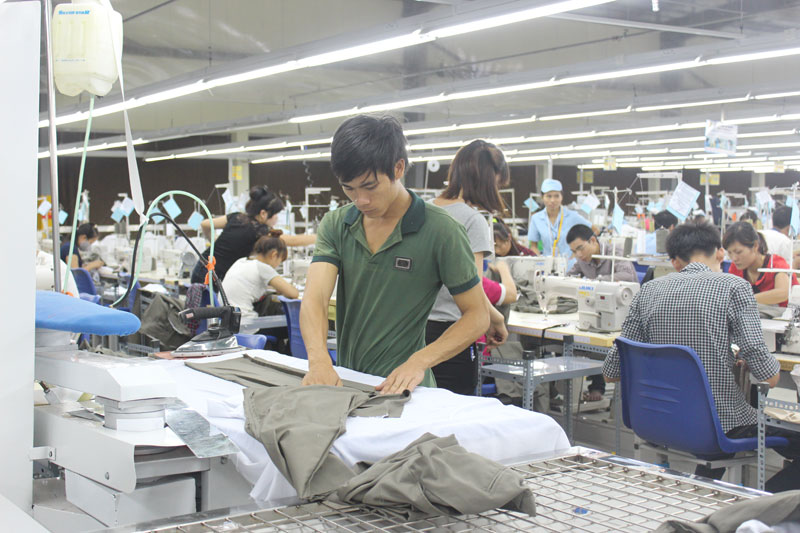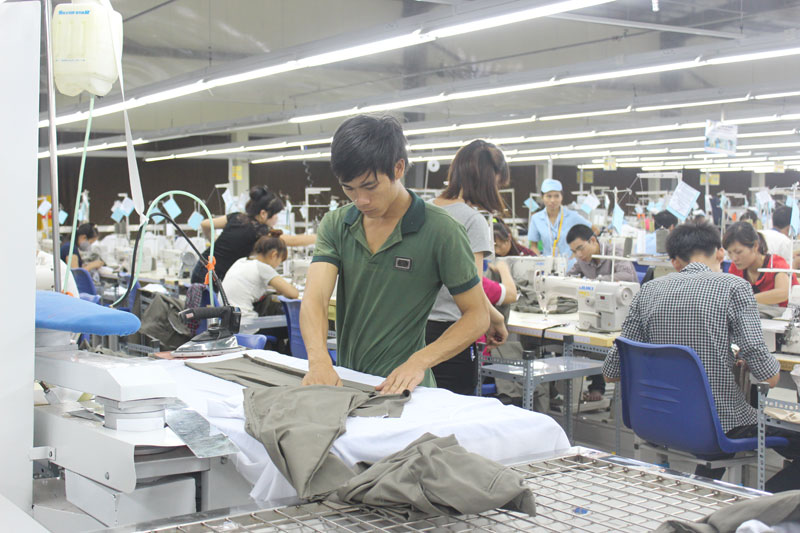


 Lac Thuy Garment joint Stock
Company offers many jobs to locals.
Lac Thuy Garment joint Stock
Company offers many jobs to locals.
At present, the number of labourers working in the agro-forestry-fishery sector accounts for 38.9 percent. To support vocational training and create more jobs for locals, especially those in rural areas, the district has flexibly taken vocational training and job generation measures in accordance with development conditions of each locality.
Labour export is considered an important solution to labour structure shifting, effectively contributing to poverty reduction. Last year, the district had 92 locals sent to work abroad, with no one working illegally. Many of them have had high and stable income, and have sent money to their families, thus helping boost poverty reduction.
In addition, the district has coordinated with companies based there to train and generate jobs for labourers. Lac Thuy Garment joint Stock Company under the Duc Giang Garment Corporation is providing jobs for 630 locals, while Dong Phu Garment Company is creating jobs for 150 others. With a goal of increasing the proportion of labourers working in the tourism and services sectors, the district is working to promote the values of spiritual tourism sites and tourist attractions such as money printing factory in Chi Ne township, Tien pagoda in Phu Nghia commune, An Linh pagoda in Yen Bong commune, Doi village communal house, Vai temple and Voi village communal house in Ba Hang Doi township, and Nieng communal house in Hung Thi commune. The tourism-services sectors have made important contributions to job generation in the district.
With its efforts, Lac Thuy district has many skilled workers. Labourers in rural areas have stable employment with high income. Job generation efforts have contributed to poverty reduction in the locality. Last year, the poverty rate was 7.03 percent, down 2.63 percent against that at the beginning of the year./.